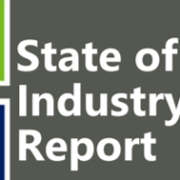Optimism Returns Despite Ongoing Challenges
It’s hard to believe it but 2024 marks the 25th annual State of the Industry Report. Throughout the years of producing this report, we’ve seen a lot of different perspectives, especially with the pandemic and economic uncertainty influencing the past few years. This year we seemed to see the industry come to the consensus of cautious optimism — despite continued inflation, many in the industry see a market that’s rebounding.
We get this snapshot every year during the first quarter by sending out the State of the Industry survey to FPI members as well as non-members within the industry. This gives us the viewpoint of folks we don’t always hear from, and it provides non-member participants a chance to view the report. Most importantly, it tells us what the industry thinks when looking back at 2023 and ahead to 2024.
This year, the report truly highlights the fact that the industry is just as cautiously optimistic as the FPI staff. Only 34% of foodservice packaging manufacturers and suppliers experienced growth in volume, compared to 60% in the previous survey. This is demonstrated in profit growth with more than 60% worsening or staying the same in 2023 compared to 2022. Highlighting the optimism, nearly 60% of the industry expect volume expansion and 77% expect profits to grow or remain the same. Foodservice operator respondents saw increased sales and were optimistic that this trend would continue in 2024.
In yet another sign that the market is stabilizing, nearly 40% of the North American manufacturers respondents reported another year of planned corporate expansion primarily through expansion of current facilities, an increase over 2023. Consistent with previous years, 60% of North American converter respondents plan to purchase machinery in 2024.
While long noted as an area of opportunity, chain quick-service restaurants are now seen by survey respondents as one of the greatest areas for market expansion, followed closely by perennial favorite, the fast casual segment. This is due in part to the convenience of being able to eat foods on-the-go or away from home. Grocery stores and convenience stores are also noted as opportunities for market expansion because of increased foodservice options. As always, convenience was noted as an influence across all market segments.
It’s really encouraging to see a wave of optimism coursing through the foodservice packaging industry, in spite of a challenging few years. Our industry is finding pathways to growth and expansion while showcasing the resilience and adaptability at its core.
We’d like to thank the organizations that participated in this year’s survey. If you haven’t participated before, but are eligible (raw material or machinery supplier, converter, foodservice operator or foodservice distributor), please think about participating next year. We realize it’s a time commitment on your end, but the survey is meaningful because of your responses. If you’d like more information or would like to be on our list for next year, let us know.


